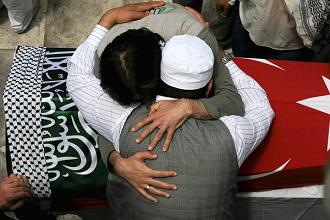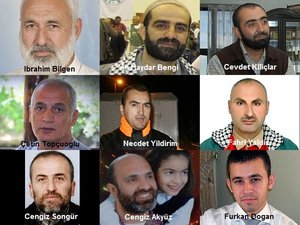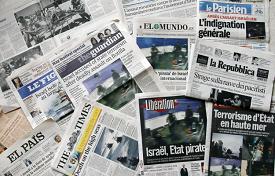The Aftermath of the Flotilla
Last night marked one week since Israel's attack in international waters on the Mavi Marmara Turkish humanitarian ship bound for Gaza, killing nine. One by one, the hundreds of witnesses aboard the vessels have been returning home to tell their stories after being stripped of any and all footage. By confiscating all non-military evidence of the incident, Israel has been able to successfully dominate the narrative, at least in the US where news of the attack had begun to dwindle by the time witnesses were released. One wonders, if Israel is conveying the whole story of what happened that night, why eliminate every single other piece of documentation? What does Israel have to hide?
According to hundreds of eyewitnesses, the Navy shot at the boat and threw tear gas and sound bombs before boarding the ship, and then hit the ground shooting. The videos released by Israel show those aboard the ship attacking soldiers with sticks. Israel claims that the deaths were an accident, that the soldiers were startled by the sticks and thus forced to shoot people to defend themselves.
Now let's put things into perspective. In 2005, the Israeli Army removed 8,000 ideological settlers from Gaza, many of them kicking and screaming with sticks and rocks in hand. The Army managed not to kill or even shoot a single one of them. Do sticks from Turks hurt more, or is it not about the sticks at all?
As Dr. Norman Finkelstein pointed out, Israeli officials met for an entire week prior to the flotilla to plan precisely what they intended to do. The Israeli Ambassador to the US Michael Oren himself stated that the Mavi Marmara was simply "too large to stop with nonviolent means." It's hard to believe that this was an accident.
While the world focuses on the flotilla and Gaza, Israel's restrictions on Palestinian rights in the rest of Palestine continue to tighten. On Friday, soldiers surrounded the Old City in Jerusalem to prevent Muslim men from praying at Al-Aqsa mosque. Only those younger than 15 or older than 40 were allowed through. Hundreds of men gathered outside the metal bars installed by the Army around the city gates. Frustrated, many men sat down to wait to pray on the sidewalk, but soldiers on horseback pushed through the crowd, forcing the men to scatter.





























